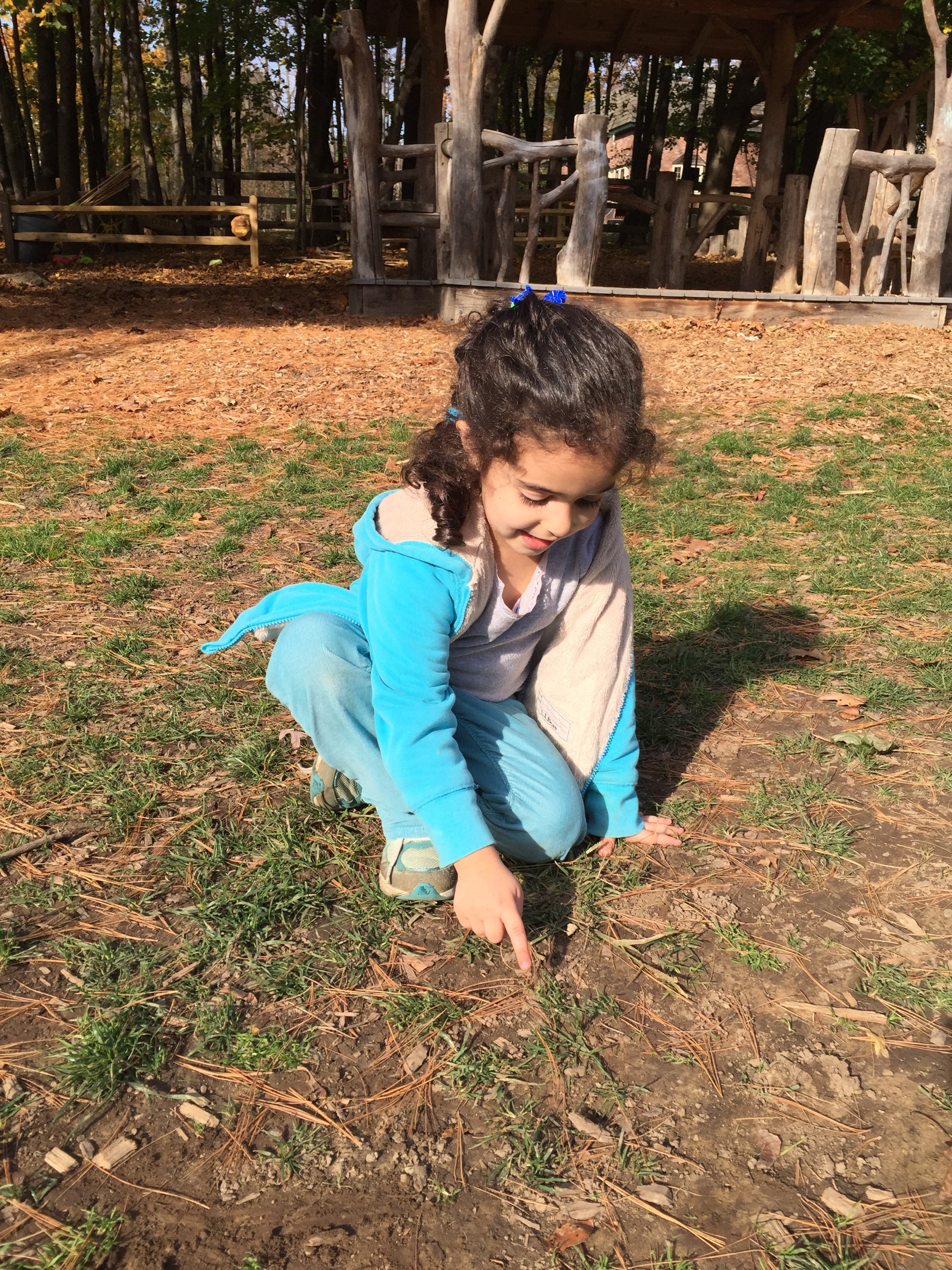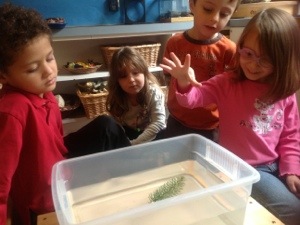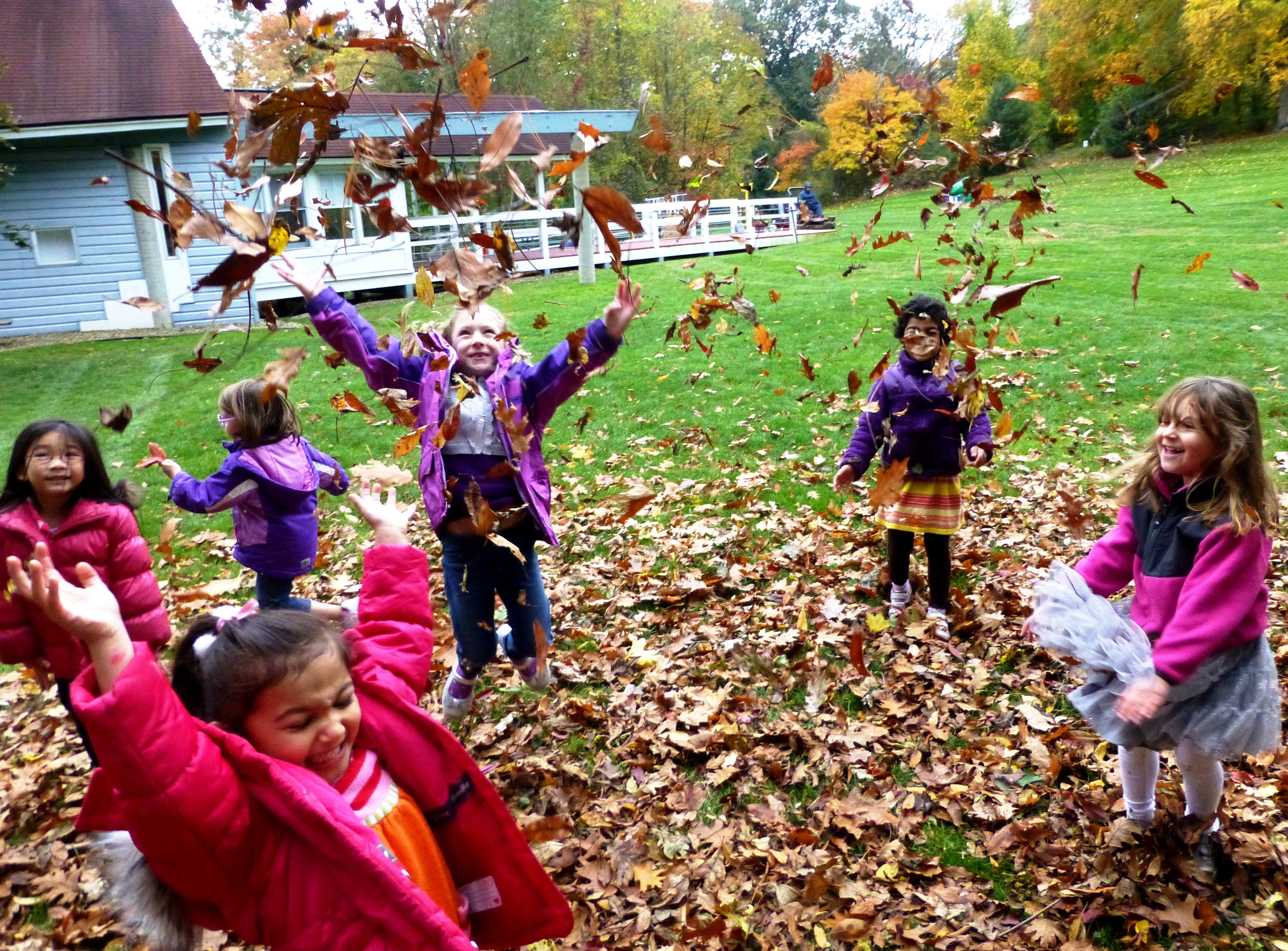This afternoon, one student was on a mission to peel and plant as many “helicopter seeds” as she could. She decided after sometime that she may need to enlist the help of some of her friends if she truly wanted to plant the most seeds. So she sent out a bulletin to anyone on the playground that she needed help! At first just a few friends came over. Then, before she knew it, almost the whole class was asking how to open the helicopters and how deep to dig the holes. 


 It wasn’t long before one of the students noted that they would need to water the seeds if they wanted them to grow and thankfully we already had plenty of sunshine. Now we just have to sit and wait. Will we have a brand new tree jutting out of the grass when we return tomorrow? Only time will tell!
It wasn’t long before one of the students noted that they would need to water the seeds if they wanted them to grow and thankfully we already had plenty of sunshine. Now we just have to sit and wait. Will we have a brand new tree jutting out of the grass when we return tomorrow? Only time will tell! 

The end of The Tree Study.
 Now that we completed our Tree Study, many random projects and pieces lay about our room. To bring it all together, the children created a mural of all that they learned. They began by viewing a picture of their adopted tree (Miss Maple or Yolk) and creating a painted representation. Next, they gathered their collection of created and found materials related to their tree. These included the bark rubbings, the tree portraits, dried leaves, and photos taken throughout the study. Each children decided upon the layout of his or her mural. Finally, each child wrote their observations upon small slips of paper and attached them to their picture. These final representations of our three-week study will be hung in the hallway next to the Pre-K room if you have the chance to view them.
Now that we completed our Tree Study, many random projects and pieces lay about our room. To bring it all together, the children created a mural of all that they learned. They began by viewing a picture of their adopted tree (Miss Maple or Yolk) and creating a painted representation. Next, they gathered their collection of created and found materials related to their tree. These included the bark rubbings, the tree portraits, dried leaves, and photos taken throughout the study. Each children decided upon the layout of his or her mural. Finally, each child wrote their observations upon small slips of paper and attached them to their picture. These final representations of our three-week study will be hung in the hallway next to the Pre-K room if you have the chance to view them.
Sink or Float?
Last week, our students started working on a sink or float experiment with items that come from trees. Several items were collected including: a stick, a branch, a leaf, helicopters, a walnut shell, and a chestnut. Then, in small groups, the students made predictions about if certain items would float or sink in a tub of water. Once the predictions were made, we tested each item and made our conclusions.
With great surprise, myself included, all of the items floated! When asked why these items floated, many children deduced that it was because of how light they were. Even items that seemed heavy enough to sink, such as the stick, bobbed right back up the the top of the water. The most exciting part about science experiments is that even the teacher can be surprised by the outcome!
After all the tree items had been tested and results were recorded, the students were asked to write a journal entry about one item in the experiment. The entry needed to include a picture and/or a description of the result using their “kid writing”.
Our Tree Unit
In the past few days, the students have taken an interest in the leaves that seem to be falling all around us. While this may have begun as a wondering about the beauty of fall, it has developed into a deeper investigation about how trees grow, get food and water, and why the leaves change color.
We started this unit of study by choosing to adopt two trees that currently grow near our playground. Each student was able to choose which tree they wanted to know more about. The students collected leaves specific to their tree, did bark rubbings, and drew pictures of their tree from a variety of angles. While both trees looked fairly similar from far away, the students learned that they were actually quite different when they moved closer. They realized that not only were the leaves different colors, but they were shaped differently as well. The students began to wonder what other kinds of leaf shapes were out there.
So the next day, we gave the students the opportunity to explore the shapes and details of a variety of leaves by viewing them on the light table. The light provided the students with the perfect opportunity to view all the shapes, lines, and veins that each leaf possessed. We discussed how the leaves were different and how some of them were the same. The students then traced the outline of their favorite leaves onto a piece of paper and then added any details they noticed.
Each of these activities may seem quite simplistic, when in fact the students are learning valuable skills during each task. They had to use their critical thinking skills when deciding what they wanted to know about trees and leaves. Each child had to use their observation and deduction skills when investigating the tree’s appearance, while also practicing self-control and focus when collecting only the leaves that belong to their tree. Lastly, the students practiced their fine motor control and artistic expression when drawing the tree from various perspectives and tracing/painting the details from the leaves they made at the light table.
[slideshow]
{This Moment}
Sometimes you are lucky enough to capture an image that exemplifies your thoughts, hopes, dreams, and feelings. Inspired by SouleMama, many bloggers across the web are posting their “perfect moments” for all to share. This is an activity in peace and joy and needs no words to carry the beauty of the moment.
{This Moment}
Sometimes you are lucky enough to capture an image that exemplifies your thoughts, hopes, dreams, and feelings. Inspired by SouleMama, many bloggers across the web are posting their “perfect moments” for all to share. This is an activity in peace and joy and needs no words to carry the beauty of the moment.
{This Moment}
Sometimes you are lucky enough to capture an image that exemplifies your thoughts, hopes, dreams, and feelings. Inspired by SouleMama, many bloggers across the web are posting their “perfect moments” for all to share. This is an activity in peace and joy and needs no words to carry the beauty of the moment.






